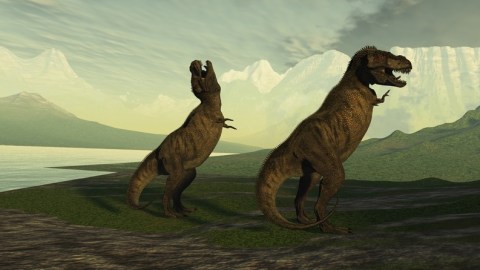Can Design Thinking Save the Economic Dinosaurs?

Design Thinking is one of the most fashionable concepts in the innovation world these days. And no wonder – doesn’t every company want to be the next Apple or Target? Design Thinking, when it works well, means stylish, innovative products that resonate with high-end customers. You get products like the iPad, partnerships with name-brand industrial designers, online buzz, and maybe even a mention or two in a new bestselling business book. But can Design Thinking really save the dinosaurs of industry?
There are a handful of industries that I’d refer to as “the dinosaurs” – the automotive industry, the newspaper and magazine industry, most healthcare providers, the utilities, the cable TV industry – these are all the usual suspects. All of the leading players in these industries are at risk of imminent extinction if they do not change the way they do business.
Yet, at a time when they could be applying basic tenets of Design Thinking to their business, they are instead choosing to define Design Thinking to mean only “design.” They forget the “thinking” part.
Take the newspaper industry, for example. Instead of radically re-thinking what it means to be a content provider in the digital age, it is far easier to focus on “making things look pretty.” A charming little Portuguese publication – i – recently won an award for being the Best Designed Newspaper in the World. The design elements are unmistakable – a gorgeous layout, wonderful page bleeds, fantastic fonts, jaw-dropping infographics, you get the idea. Yes, it’s designed well and I love the way it looks.
However, that’s the way “design” is typically translated by the economic dinosaurs – a cool presentation layer, cool product names, cool celebrity backers, a cool building designed by a starchitect, a cool marketing campaign – and I’m just not sure it’s enough.
Design without a fundamental design change to the business model – where does that lead you? Design Thinking, when it includes the “design of new user experiences” – that’s where I think industry’s dinosaurs can benefit from design. Newspaper companies should be thinking of how they can create new experiences across every platform, of innovative ways to charge for premium content, of new distribution models – not just ways to make the fonts look nicer.
IDEO’s Tim Brown – usually considered one of the pioneers of the Design Thinking movement – has defined Design Thinking as “a discipline that uses the designer’s sensibility and methods to match people’s needs with what is technologically feasible and what a viable business strategy can convert into customer value and market opportunity.” I think this does an excellent job of locating design within certain intellectual guardrails. Note that Tim Brown does not use the words “cool” or “sexy” to define Design Thinking.
Design has to be feasible and viable. Design Thinking is not just something you can sprinkle on the top of an existing business model — it requires a long-term commitment to fundamentally changing the corporate DNA. Over the long-term, Design Thinking can save the economic dinosaurs – but only if they truly understand the difference between “design” and “design thinking.”





